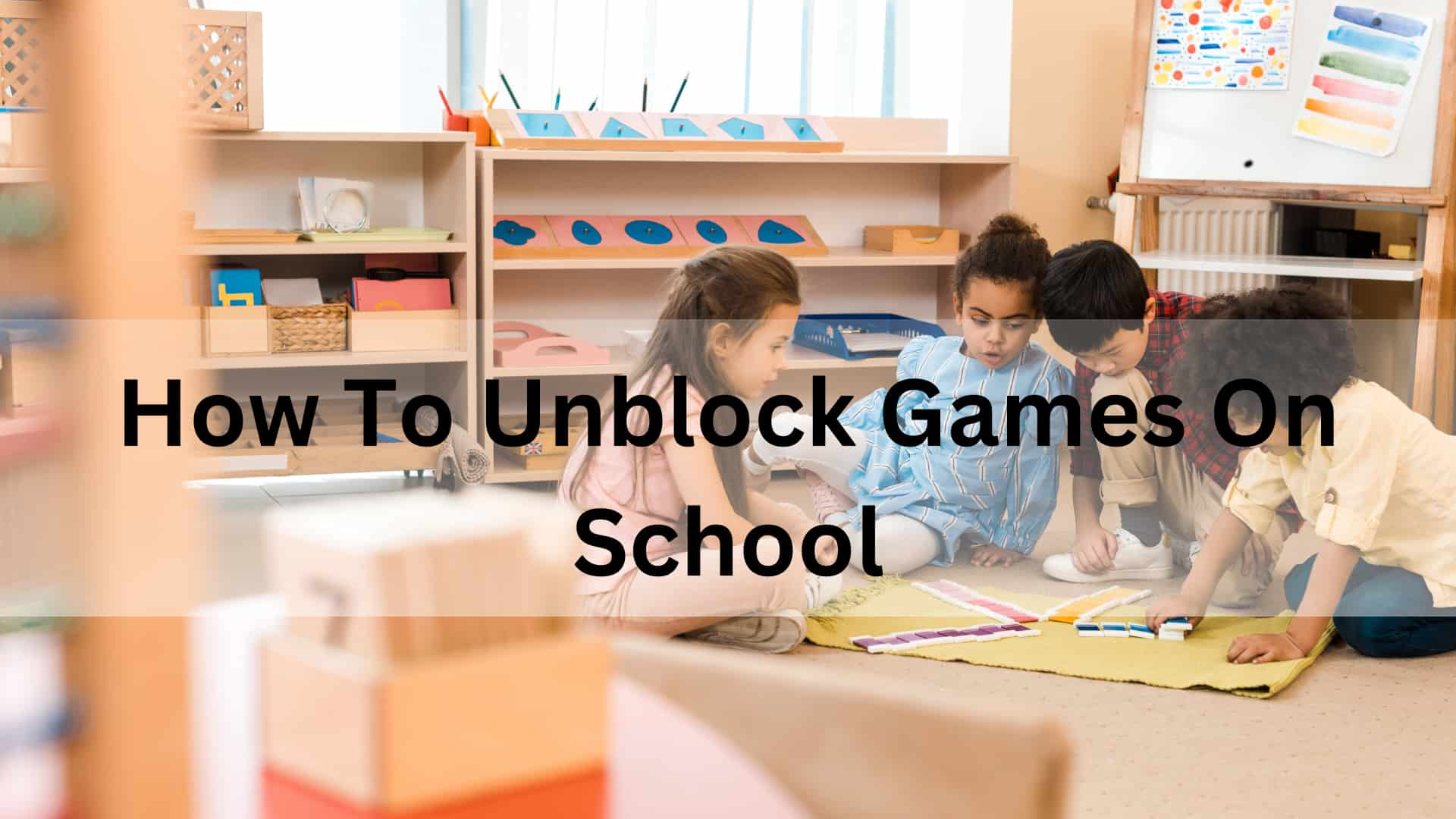How To Unblock Games On School – Endless Fun Without Limits

There’s nothing more exciting to a student than finding ways to play games when they’re supposed to be focusing in class. However, most school networks have strict filtering policies that block all gaming and entertainment sites. This leaves students bored out of their minds during downtimes like study hall or lunch breaks. In this article, we will explore several effective methods for sneaking past school restrictions to access unblocked games.
Use Anonymizing Browsers
One of the easiest ways to unblock games at school is to use privacy-focused web browsers that anonymize your online activity. Browsers like Tor and Firefox Focus preserve your anonymity by removing trackers and hiding your real IP address from websites. When you use them on the school network, it bypasses content filtering since the school can’t see what sites you’re visiting.
Tor Browser is the gold standard for anonymous browsing. It routes your traffic through a worldwide volunteer network to hide your location and identity. Just open up Tor at school and you’ll have secret access to any games or entertainment blocked on the normal browsers. The downside is Tor can be slow due to all the encrypted routing.
For speed and simplicity, Firefox Focus is a better choice. It automatically wipes your history, cookies and cache after each session. So the school monitors see nothing but a blank slate whenever you browse. Load up Focus, search for “unblocked games” and start playing without a trace. Just close the app when you’re finished to delete all records.
Access Game Sites Through Proxies
If anonymizing browsers don’t work alone, a backup plan is to utilize proxy servers. Proxies act as a middleman between your device and websites, routing traffic in a way that bypasses content filters. When the school sees the connection, it appears to be going to the proxy rather than the actual game site.
Countless free proxy sites are providing unrestricted access to the web. Just google “proxy websites” or “gaming proxies” to find options. Most allow you to simply enter a game URL or search terms, and the proxy will load the hidden page for you. Common student favorites include Unblocked.gq, Hide.me and SchoolProxy.net.
For an extra layer of protection, consider using the proxy within an anonymizing browser. The double layer of routing and encryption makes it virtually impossible for school monitors to detect what you’re up to. And most proxies work equally well on computers, phones and tablets.
Configure A VPN Connection
A Virtual Private Network or VPN creates an encrypted tunnel between your device and a remote server, masking your real IP and location. It’s like having your proxy that tunnels all your internet traffic. When connected to a VPN at school, the network will only see generic VPN activity – not specific game sites you visit within the secure tunnel.
Some major advantages of VPNs over regular proxies include military-grade encryption of all traffic, ability to spoof your location, and fewer chances of being blocked by filters over time. Popular free VPNs for students include ProtonVPN, Hotspot Shield and Windscribe. Just download the app, tap connect, then browse games freely from your school-issued laptop, phone or tablet.
Keep in mind free VPNs have data limits, speeds may be slower than direct connections, and some schools figure out VPN use is happening. But if used sparingly just for times when bored in class, VPNs can be tremendously effective to unblock restricted games and more.
Configure Alternative DNS Servers
Your school likely uses customized DNS (Domain Name System) servers to enforce content filtering policies across the entire network. However, by manually configuring alternative public DNS servers on your device, you can bypass this restriction.
On Windows, go to Network & Internet settings, then Change adapter options. Right click your wifi/ethernet, select Properties, then Internet Protocol Version 4. Prefer public OpenDNS or Google DNS servers over your school’s ones. For Mac/Linux, consult your OS documentation on configuring DNS.
Phones usually let you manually set DNS in wifi settings also. Now when you search for/access gaming sites, your requests will go straight to the unrestricted DNS solution rather than the school’s censored servers. It may not work for everything, but sometimes public DNS is all you need.
Utilize Cloud Gaming Platforms
Cloud gaming portals like InstaGaming and Nitrado Gaming let you stream and play full games through a web browser without downloads. This makes them ideal for unblocking games on school devices. As long as the network allows basic web traffic, you should be able to access these cloud gaming hubs and their game libraries.
Browse available titles, select one you want to stream, and start playing immediately in your browser tab with low latency. Many of the games supported don’t even require powerful hardware and can run smoothly on older school laptops/tablets. Popular cloud services are constantly adding new games too, so you’ll always have options.
And since it just looks like regular web browsing to the school monitors, cloud gaming platforms offer a stealthy solution for gaming discretely in class. Check websites like TopCloudGaming.net to find the best free-to-play cloud services accessible behind school restrictions.
Use Your Phone As A Hotspot
If you happen to have an unlimited data plan on your phone, consider tethering it to create an instant hotspot for your school device. This creates an untracked network outside the school’s controls, free from any blocks or filters they have implemented.
On iPhones, go to Settings > Personal Hotspot and then enable the hotspot and allow passwords if needed. If using Android, it’s Settings > Network & Internet > Hotspot and Tethering > Portable Hotspot. Now your laptop, tablet or whatever else can wirelessly connect to this mobile hotspot and access the open internet freely.
Just be strategic on how and when you do this, as constant hotspot usage may draw unwanted attention. But it’s a handy Plan B for rare occasions you want to play blocked games during a boring class period. Only downside is potential data usage, so check your plan limits before relying on phone tethering heavily.
Jailbreak or Root Your Device
This method requires a bit more technical skill, but for power users who want ultimate control – consider jailbreaking or rooting your school-issued device. By bypassing manufacturer restrictions on iOS and Android respectively, you gain superuser privileges to fully customize the system however you please.
This means you can remove any monitoring profiles or certificates installed by your school IT department that enforce content filtering policies. Certain proxy apps and VPNs work much better post-jailbreak/root too without restrictions. All network traffic is now openly accessible without filters or blocks getting in the way.
Of course, modifying a device owned by the school also carries risks if caught. They may confiscate or ban the device for breaking policies. Only attempt this on personal phones, or be very discreet on school property. But for advanced students seeking total freedom, jailbreaking presents one of the strongest options for carefree unblocked gaming.
Conclusion
Staying entertained behind the restrictive walls of a school network poses an ongoing challenge for many bored students. However, with some technical know-how and creativity, there are some effective methods available today for unblocking games discretely without getting into trouble. While schools continuously battle this cyberarms race, savvy students will keep finding innovative ways to sneak past restrictions and optimize their downtime with stress-free online diversions. With a blend of these techniques, you too can beat the blocks and bring the fun back to school.




